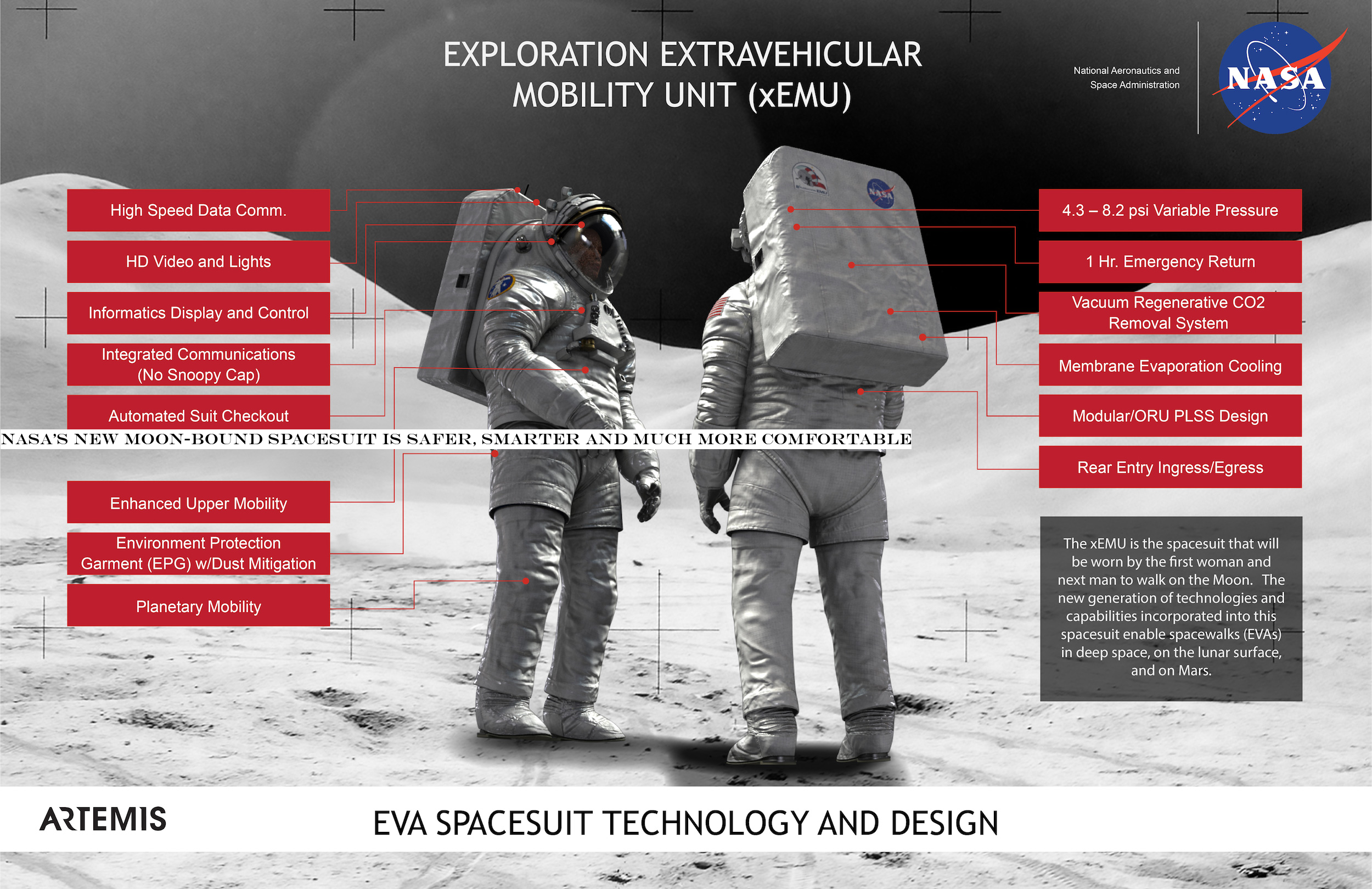INSUBCONTINENT EXCLUSIVE:
The next Americans to set foot on the Moon will do so in a brand new spacesuit that based on, but hugely improved from, the original Apollo
suits that last went up there in the &70s
With easier entry, better mobility and improved communications, these won''t be nearly as clumsy or restrictive — though you still
wouldn''t want to wear one around the house.
The new spacesuit, known as the Exploration Extravehicular Mobility Unit or xEMU, is still deep
in development, but its features have been more or less finalized
It already being tested underwater, and orbital testing is scheduled for 2023.
Rather than build something completely new from the ground
up, NASA engineers decided to address the (sometimes literal) pain points of a previous, proven design
As such, the new suit superficially resembles the ones in which we saw moonwalkers bunny-hopping around the lunar surface
But that because the basic design for a suit that protects you from hard vacuum and cosmic radiation is relatively straightforward.
In NASA
words, a spacesuit is &a personalized spaceship that mimics all of the protections from the harsh environment of space and the basic
resources that Earth and its atmosphere provide.& There only so much wiggle room there.
But while some parts may not have changed much since
the old days, others are getting major improvements
First and foremost, both for safety and mission purposes, maneuverability has been upgraded in tons of ways.
Infographic showing new and
updated features of NASA new xEMU spacesuit
For one thing, there are altogether new joints and better ranges of motion for existing ones
The standard &astronaut stance& indicative of the inflexibility of the Apollo suits should be all but eliminated with the new freedoms
Not only will the normal range of motion be easier, but astronauts will be able to reach across their own torso or lift something clear over
their head.
More flexible knees and &hiking-style& boots with flexible soles will make crouching and getting up much easier as well
It hard to believe we got this far without those basic capabilities.
A 3D scan of the body (indicated by the dots) shows how various suits
and parts would fit
The fit of the suits will be vastly better as well; NASA is using anthropometry, or 3D scanning of the body, to
determine exactly which pieces and fits will be best for a given astronaut.
Speaking of which, much of the suit will be made from easily
The lower half can be switched out when doing an orbital EVA versus a surface EVA, for instance
And the helmet visor has a &sacrificial& protective layer that can easily be replaced with a new one if it gets damaged.
Inside the helmet,
the familiar but apparently widely disliked &Snoopy caps& that housed microphones and such are gone, replaced by modern voice-activated mics
and headphones that will produce much better audio quality and much less sweat.
For that matter, the entire communications stack has been
replaced with a new HD camera and lights, connected by a high-speed wireless data link
Live video from the Moon may be old hat, but it going to be a bit different from that grainy black-and-white business in 1969.
One of the
most important new features is rear entry
The awkward process of donning an old-style EVA suit requires a good deal of space and help
The new ones are entered via a hatch on the back, allowing more natural placement of arm hinges and other features, and possibly changing
how the suits are mounted
One can easily imagine a suit acting as a sort of airlock: you climb in the back, it seals you in, and you walk right out into space
Well, there&d probably be more to it than that, but the rear-entry hatch could facilitate some cool stuff along those lines.
NASA calls for
input on Moon spacesuits and plans to source them commercially in future
Although NASA is designing and certifying these suits, it may not
actually make them itself
The agency called last week for input on how it might best source spacesuits from the commercial space industry.
That part of NASA decision
to rely increasingly on contractors and private industry to support its 2024 Moon ambitions
Of course, contractors were an essential part of the Apollo program as well, but NASA is now giving them much more leeway and may even use
private launch services.
You can keep up with the latest NASA spacesuit news here, of course, or at the agency SuitUp tag.

